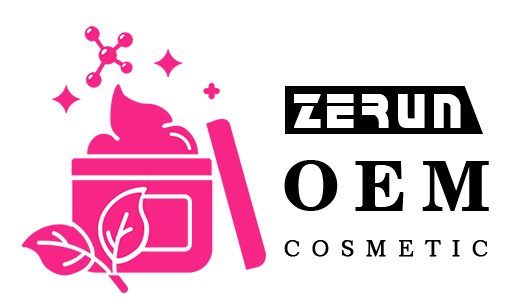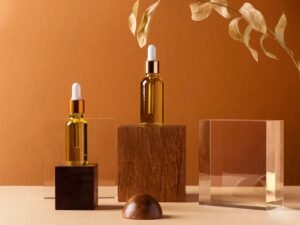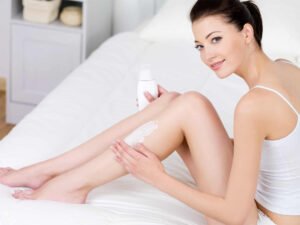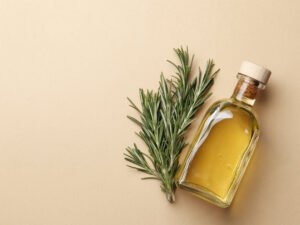“Can I use niacinamide with vitamin C?” is one of skincare’s most-searched combos—and for good reason. When done right, the duo brightens tone, smooths texture, supports the barrier, and plays well with sunscreen.
Here’s the simple, evidence-based answer: Yes—you can use niacinamide with vitamin C safely. For low-pH L-ascorbic acid, apply it first on clean, dry skin, then 3–5% niacinamide, light moisturizer, and SPF in the morning. With neutral-pH derivatives (SAP/MAP/3-O-ethyl), either order works—use the thinner texture first. Start slowly, alternate with exfoliants/retinoids, discard dark-orange oxidized C, and patch-test new products; buffer sensitive skin with gel-cream.
But which vitamin C form fits your skin (L-ascorbic, SAP/MAP, 3-O-ethyl, or THD), what concentrations actually work, and how do you store it so it doesn’t oxidize? Keep reading for goal-based picks, mistake-proof layering maps, and B2B formulation tips.
What’s the real verdict on mixing?
Yes—you can combine niacinamide and vitamin C safely and effectively. The old “they cancel out” caution came from lab conditions (high heat/low pH) unrepresentative of modern products. In real-world skincare, the pair is complementary: tone-evening + barrier support + antioxidant defense.
Why the myth persists—and what today’s formulas actually do
- Outdated experiments: Early concerns centered on niacinamide converting to nicotinic acid or complexing with L-ascorbic acid at high temperatures and extreme pH. Everyday skincare is formulated and stored far from those conditions.
- Modern ingredient quality: Refined raw materials, chelators, pH buffers, and oxygen-minimizing packaging keep both actives stable in finished products.
- Complementary mechanisms:
- Niacinamide (vitamin B3): Supports barrier lipids, moderates sebum, reduces redness, and helps fade post-blemish marks.
- Vitamin C: Antioxidant shield vs. pollution/UV, brightens by inhibiting overactive melanogenesis, and supports collagen.
- Practical results: Together, you tend to see clearer pores, more even tone, and steadier midday shine—provided you pick the right vitamin C form for your skin and layer intelligently.
Oily-skin and brightening lines gain traction with niacinamide 3–5% paired to pH-appropriate vitamin C formats in airless pumps. For global distribution, we prioritize ISO 22716/GMP, oxygen-scavenging caps, and stability data across 40 °C/75% RH and freeze-thaw.
Do niacinamide and vitamin C cancel each other out or cause flushing?
They don’t cancel out in typical use, and flushing is uncommon. Occasional warmth or pinkness usually stems from acidic L-ascorbic formulas, micro-irritation, or very reactive skin—not from the mere presence of niacinamide with vitamin C.

Mechanisms behind the (rare) “flush”
- Acid bite, not “interaction”: Water-based L-ascorbic acid (L-AA) serums run acidic (often pH < 3.5). Sensitized or freshly shaved skin can tingle regardless of niacinamide.
- Raw material variability: Impurities or high free acids in low-grade inputs can increase sting. Premium, cosmetic-grade niacinamide and stabilized vitamin C derivatives minimize this.
- Speed vs. tolerance: Overzealous stacking—L-AA + AHA/BHA + retinoid in the same night—overloads skin, making any serum feel harsh.
How to minimize any risk
- Patch test new products on the T-zone or jaw for 24–48 h.
- Start alternate days; increase to daily if calm.
- Avoid stacking exfoliants the same session as L-AA.
- Buffer with a gel-cream if you’re retinoid-new or post-shave.
- Try gentler C formats (3-O-ethyl ascorbic acid, SAP/MAP, THD) if you’re sensitive.
We reduce sting potential with soothing systems (panthenol 0.5–1%, allantoin 0.2–0.5%), low-residue film formers, and fragrance-light profiles. Clear on-pack onboarding (alt-night schedule) lowers return rates.
Which vitamin C forms pair best with niacinamide for different goals?
Match the vitamin C form to your skin and claim: L-AA for fast radiance, SAP/MAP for gentler brightening (and acne-prone support), 3-O-ethyl for balanced potency + tolerance, THD for lipid-rich, dry or mature skin, AA2G for steady daily use.
At-a-glance C-form × niacinamide pairing matrix
| Vitamin C form | Water/Oil | Typical % | Approx. pH window | Best with Niacinamide for… | Pros | Watch-outs |
|---|---|---|---|---|---|---|
| L-Ascorbic Acid (L-AA) | Water | 10–20% | < 3.5 | Rapid brightening, photo-defense AM | Fast results, strong antioxidant | Can tingle on sensitive skin; needs low pH & oxygen control |
| Sodium Ascorbyl Phosphate (SAP) | Water | 1–5% | ~6–7 | Blemish-prone + tone | Gentle, stable; pairs well with niacinamide for oil control | Slower glow vs. L-AA |
| Magnesium Ascorbyl Phosphate (MAP) | Water | 3–10% | ~6–7 | Sensitive or redness-prone | Tolerant, barrier-friendly | Less dramatic “instant radiance” |
| 3-O-Ethyl Ascorbic Acid (EAA) | Water | 5–15% | ~4–6 | Balanced brightening + tolerance | Good stability/potency balance | Quality varies by supplier; still needs good packaging |
| Ascorbyl Glucoside (AA2G) | Water | 2–5% | ~5–7 | Daily brightening, easy layering | Mild, steady results | Requires skin enzymes; slower conversion |
| Tetrahexyldecyl Ascorbate (THD) | Oil | 5–20% | N/A (anhydrous/oil) | Dry/mature skin, barrier-friendly glow | Luxurious skin feel; pairs with ceramides | Needs compatible emollients; slower visible brightening than L-AA at equal time |
Goal-based picks (with niacinamide 3–5%)
- Fast radiance / dullness: L-AA 15% AM + niacinamide PM (or a separate niacinamide AM essence if tolerated).
- Acne-prone + PIH: SAP 2–3% + niacinamide 4–5%; add zinc PCA 0.1–0.5%.
- Sensitive but uneven tone: MAP 5% or AA2G 3–5% + niacinamide 3–4%.
- Oil-balanced glow with less sting: 3-O-ethyl 10% + niacinamide 4–5%.
- Dry, photo-aged skin: THD 10% in a light oil/cream + niacinamide 3–4% in a separate water serum.
For international lines, we often develop two C tracks under a single brand: L-AA water serum (airless, opaque, low-pH) for radiance seekers, and a 3-O-ethyl or MAP/SAP serum for everyday tolerance—both labeled “Niacinamide-Friendly.”
How should you layer (order, pH, timing)?
Layer thin → thick and low pH → neutral. Use L-AA first (on clean, dry skin), then niacinamide, then moisturizer, then SPF AM. With neutral-pH derivatives (SAP/MAP/AA2G/3-O-ethyl) you can apply either before or after niacinamide—consistency matters more than micro-timing.
AM vs. PM logic
- AM (antioxidant shield): Vitamin C shines in the morning to help blunt pollution/UV-triggered oxidative stress. Follow with SPF 30–50.
- PM (repair & even tone): Niacinamide fits AM/PM; vitamin C derivatives also work at night. If you use retinoids, alternate nights with strong acids and keep vitamin C on AM or on non-exfoliation PMs.
pH & texture rules of thumb
- Low-pH L-AA water serums go immediately after cleansing. Wait ~60 seconds for absorption; no need for long “neutralizing” gaps.
- Neutral-pH derivatives (SAP, MAP, AA2G) and niacinamide are flexible—apply in thin textures first (essence → serum → gel-cream).
- Oil-soluble THD layers best after water serums but before heavy creams.
Simple layering maps
If you use L-AA (AM):
Cleanse → L-AA serum → Niacinamide serum/essence → Lightweight moisturizer → Broad-spectrum SPF
If you use SAP/MAP/AA2G/3-O-ethyl (AM):
Cleanse → Niacinamide or Vitamin C derivative (either order; pick the thinner first) → Lightweight moisturizer → SPF
If you use THD (AM or PM):
Cleanse → Niacinamide water serum → THD oil-serum → Moisturizer → SPF in AM
Weekly rhythm (keep it sane)
| Night | Mon | Tue | Wed | Thu | Fri | Sat | Sun |
|---|---|---|---|---|---|---|---|
| Suggested plan | Retinoid (no acids) | Recovery (niacinamide only) | AHA/BHA | Recovery | Vitamin C derivative PM (optional) | Recovery | Retinoid or AHA/BHA (alternate weekly) |
Troubleshooting quick guide
- Tingling with L-AA? Shorten contact with acids elsewhere; add a hydrating buffer (HA gel).
- Shiny by noon? Add zinc PCA with niacinamide; use matte SPF.
- Uneven results? Stick to one vitamin C format for 6–8 weeks before swapping.
To make layering fool-proof, we print AM/PM icons on labels, color-code pH-sensitive steps, and include a QR micro-tutorial. Popular kits: L-AA AM + niacinamide gel + matte SPF, and niacinamide + 3-O-ethyl AM/PM bundles.

Is one combined product better than two separate steps?
It depends on your goals and skin. A combined serum simplifies routines and reduces order mistakes—great for beginners and sensitive skin. Two separate steps give you higher potency and flexibility (e.g., low-pH L-AA AM, niacinamide any time) and are easier to fine-tune.
Combined vs. Two-step: quick comparison
| Option | Best for | Pros | Cons | Example setup |
|---|---|---|---|---|
| Combined serum (C+Nia) | Routine minimalists, sensitive beginners, travel kits | Simple, fewer pH/order errors; one SKU | Potency ceilings; true L-AA often incompatible; fewer ways to adjust | 3-O-ethyl 10% + niacinamide 4% serum |
| Two separate steps | Tinkerers, stubborn PIH, photo-aging | Flexible % and pH; swap actives seasonally; target zones | More steps; need order discipline | AM: L-AA 15% → niacinamide 4%; PM: niacinamide only |
How to choose (decision mini-tree)
- Want fast radiance and can tolerate acids? → Two steps with L-AA AM.
- Want low-sting brightening or travel light? → Combined serum using 3-O-ethyl/SAP/MAP + niacinamide.
- Struggle with PIH + oil? → Two steps so you can keep niacinamide daily and dial vitamin C form/strength.
True “one-bottle” C+Nia is most robust with neutral-pH derivatives (3-O-ethyl, MAP, SAP, AA2G). For L-AA SKUs, we recommend separate serums or dual-chamber packaging, chelators (e.g., EDTA), oxygen-barrier pumps, and optional ferulic/tocopherol stabilizers.
Do you put vitamin C or niacinamide first?
Follow thin → thick and lower pH → higher pH. That means L-ascorbic acid (low pH) first, then niacinamide, moisturizer, SPF AM. With neutral-pH derivatives (SAP/MAP/AA2G/3-O-ethyl), either order works—apply the thinner product first for even coverage.
Order by scenario
| Scenario | Order | Why |
|---|---|---|
| L-AA water serum + niacinamide gel | Cleanse → L-AA → Niacinamide → Moisturizer → SPF | Honors pH gradient; maximizes L-AA uptake |
| Niacinamide essence + SAP/MAP | Cleanse → Thinner (essence) → Thicker (serum) → Moisturizer → SPF | Neutral pH both ways; texture decides |
| Niacinamide water serum + THD oil | Cleanse → Niacinamide → THD oil → Cream → (SPF AM) | Water layers first; oil seals in |
| Post-shave mornings | Cleanse → Niacinamide (soothe) → Skip strong acids → Moisturizer → SPF | Reduce sting on micro-nicks |
| Retinoid users (night) | Cleanse → Retinoid on dry skin → Niacinamide buffer later | Keep retinoid undiluted; niacinamide adds tolerance |
Timing & practical tips
- Wait ~60 seconds after L-AA for initial absorbency; no long “neutralizing” gap needed.
- Apply to dry skin before retinoids to lower sting risk.
- If pilling occurs, reduce layers, switch to lower-residue gels, or increase dry-down time.
We engineer textures to “self-order” (fast-flash aqueous serums under light oil-serums) and add low-residue polymers to prevent pilling. On pack, we print AM/PM + order icons to cut support tickets.

Which concentrations work best in combo formulas?
Most people do well with niacinamide 3–5% plus a vitamin C tailored to tolerance: L-AA 10–20% (separate serum), 3-O-ethyl 5–15%, SAP 2–3%, MAP 5–10%, AA2G 2–5%, THD 5–20%. Start lower, build consistency, then adjust.
Goal-based dosing map (consumer-friendly)
| Goal | Niacinamide % | Vitamin C form + % | Use pattern | Texture cue |
|---|---|---|---|---|
| Max radiance fast | 4–5 | L-AA 15–20 (separate) | AM daily under SPF | Watery, low-pH serum |
| Oil + PIH (acne marks) | 4–5 | SAP 2–3 or 3-O-ethyl 8–10 | AM or PM daily | Serum-gel |
| Sensitive, redness-prone | 3–4 | MAP 5–10 or AA2G 3–5 | Daily (alt with recovery nights if needed) | Essence/serum |
| Dry/photo-aged | 3–4 | THD 10–20 | PM most nights | Lightweight oil-serum |
| Maintenance/first-timers | 3–4 | 3-O-ethyl 5–8 or AA2G 2–3 | AM 5–6 days/week | Light serum |
Formulating “two-in-one” (B2B view)
- Sweet spot: Niacinamide 4% + 3-O-ethyl 8–10% at pH 5–6 in a serum-gel.
- Gentle track: Niacinamide 3% + MAP 5% for everyday brightening.
- Premium lipid track: Niacinamide 3% water serum + THD 10% oil-serum sold as a duo.
- Add chelators, antioxidant co-systems (E/ferulic where compatible), and airless, opaque packaging. Validate with accelerated stability (40 °C/75% RH, 3 months) and real-time (12 months).
Safety edges
- Going >10% niacinamide can increase warmth or transient flush in some; most users don’t need it.
- For L-AA, higher % increases brightness and irritation risk; many see a good balance at 10–15%.
What common mistakes should you avoid?
Don’t stack retinoids + strong acids + L-AA in one session, don’t keep using oxidized (dark orange/brown) C serums, and don’t chase instant results by over-exfoliating. Keep SPF daily, and introduce actives one by one to pinpoint triggers.
Mistake → Fix table
| Mistake | What happens | Fix today |
|---|---|---|
| Layering L-AA + AHA/BHA + retinoid same night | Irritation, barrier hit, more PIH risk | Split nights: C AM, acids Wed/Sat, retinoid Mon/Thu |
| Using oxidized C (dark, metallic smell) | Reduced efficacy + potential irritation | Discard; switch to fresh, opaque, airless packaging |
| Chasing 20% C + 10% Nia on day 1 | Redness, warmth, flaking | Start lower, ramp weekly; add recovery nights |
| Ignoring SPF | Oxidative/UV undo your gains | SPF 30–50 daily, matte fluids for oily skin |
| Heavy balms in humid weather | Congestion, dull film | Use gel-cream textures, powder/matte SPF touch-ups |
| Post-shave acids | Sting → rebound oil | Use niacinamide + panthenol only on shave days |
| Mixing many brands at once | Hard to debug reactions | Add one new item per week; keep a simple core |
Reduce misuse with on-pack routines, QR how-to, and starter kits that pre-set frequencies (e.g., “Week 1: alt-day”). Offer mini sizes to phase in potency and cut return rates.

How should you store for stability?
Keep vitamin C/niacinamide away from heat, light, and air. Choose opaque, airless pumps, cap tightly, and store in a cool, dry cabinet (refrigerate only if the label allows). Discard if color/scent changes markedly or texture separates.
Storage & packaging guide
| Format | Best packaging | Home storage | Shelf-life after opening* | Oxidation cues |
|---|---|---|---|---|
| L-AA water serum | Opaque, airless pump; UV-blocking bottle; nitrogen headspace | Cool, dark cabinet; avoid steamy bathrooms | ~3–6 months | Turns from pale to deep orange/brown; metallic smell |
| 3-O-ethyl / SAP / MAP / AA2G | Opaque bottle or airless; tight seal | Room temp, away from sun | ~6–12 months | Slight yellowing over time; still discard if pronounced |
| THD oil-serum | UV-protective glass or laminate tubes | Room temp; avoid heat spikes | ~9–12+ months | Rancid or waxy off-odors; haze or separation |
- Indicative; follow brand PAO (period-after-opening) and manufacturing stability data.
Travel & usage tips
- Decant into travel-size airless; purge air before capping.
- Wipe pumps clean to prevent crusting (which drags in oxygen).
- If you must fridge L-AA, let it return to room temp before use to reduce condensation.
- Never store in a hot car/gym locker.
We fill under nitrogen, use low-O₂ headspace, select UV-barrier resins, and validate with ISTA shipping + freeze–thaw. For L-AA, consider ferulic/tocopherol co-stabilization and low-pH buffers; for derivatives, prioritize enzyme-friendly pH and pump compatibility.
Conclusion
You don’t have to choose between glow and calm—niacinamide and vitamin C play nicely when you match the C form to your skin, keep niacinamide around 3–5%, and respect order and pH. Use low-pH L-ascorbic acid first on clean, dry skin, or pair niacinamide with neutral-pH derivatives (SAP/MAP/3-O-ethyl/AA2G) in whichever texture is thinner. Build consistency before chasing strength, alternate nights with acids or retinoids, and toss oxidized, dark-orange serums. Daily SPF seals the deal. Store smart—opaque, airless, cool cabinet—to protect potency. Do this for 6–8 weeks and you’ll see brighter tone, steadier oil, and a stronger barrier without the drama.
Build your C+Nia line with Zerun Cosmetic, Zerun Cosmetic formulates and manufactures stable, market-ready serums (L-AA, 3-O-ethyl, SAP/MAP) with GMP/ISO 22716, low MOQs, free design, and free samples.





